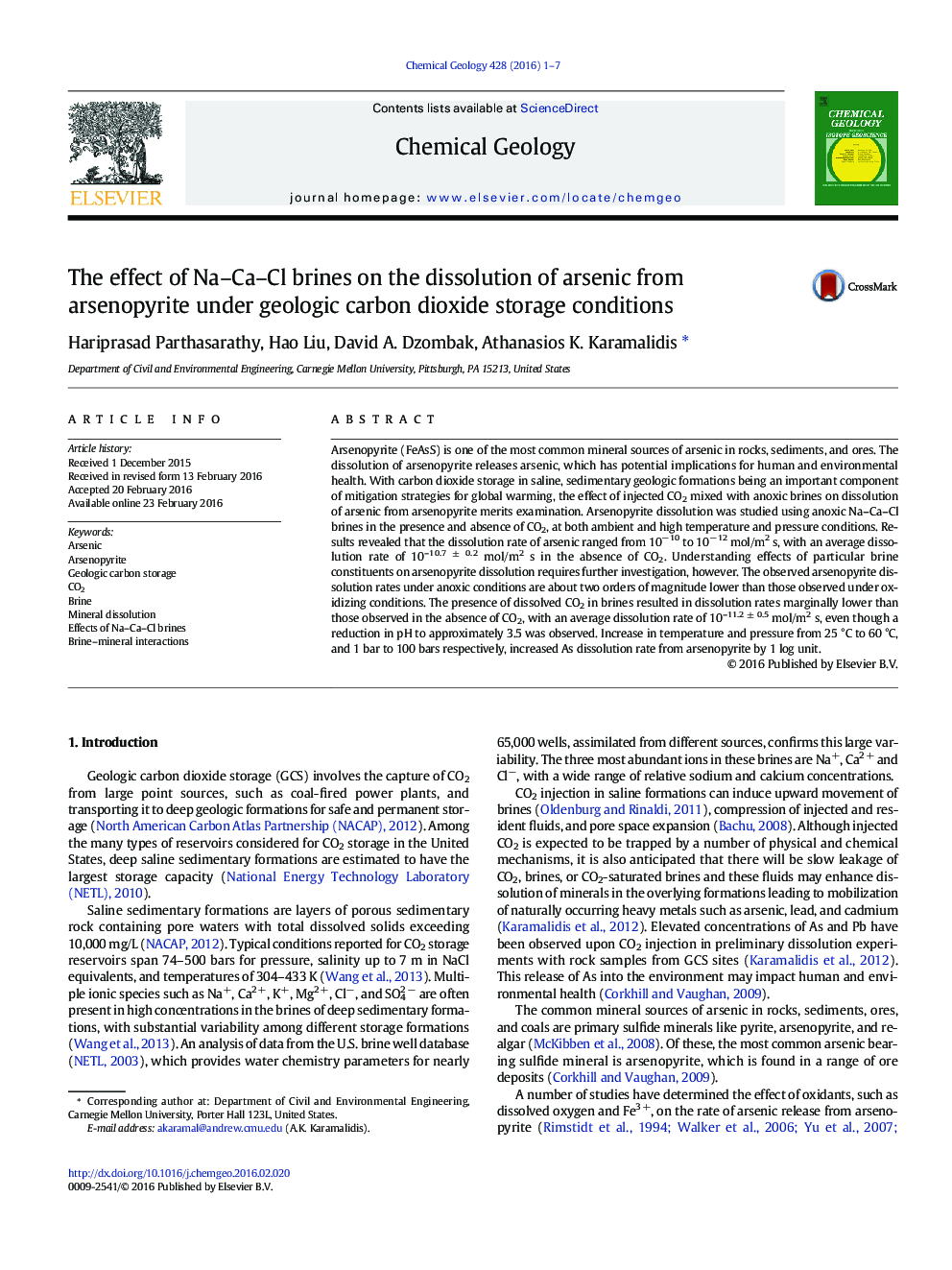| Article ID | Journal | Published Year | Pages | File Type |
|---|---|---|---|---|
| 6436110 | Chemical Geology | 2016 | 7 Pages |
â¢Dissolution of arsenopyrite under geologic CO2 storage conditions is dependent on brine compositions.â¢CaCl2 concentration in Na-Ca-Cl brines influences arsenic release rates.â¢CO2 addition into brines decreases dissolution rate of arsenic.â¢Increase in temperature leads to a corresponding increase in dissolution rates.
Arsenopyrite (FeAsS) is one of the most common mineral sources of arsenic in rocks, sediments, and ores. The dissolution of arsenopyrite releases arsenic, which has potential implications for human and environmental health. With carbon dioxide storage in saline, sedimentary geologic formations being an important component of mitigation strategies for global warming, the effect of injected CO2 mixed with anoxic brines on dissolution of arsenic from arsenopyrite merits examination. Arsenopyrite dissolution was studied using anoxic Na-Ca-Cl brines in the presence and absence of CO2, at both ambient and high temperature and pressure conditions. Results revealed that the dissolution rate of arsenic ranged from 10â 10 to 10â 12 mol/m2 s, with an average dissolution rate of 10-10.7 ± 0.2 mol/m2 s in the absence of CO2. Understanding effects of particular brine constituents on arsenopyrite dissolution requires further investigation, however. The observed arsenopyrite dissolution rates under anoxic conditions are about two orders of magnitude lower than those observed under oxidizing conditions. The presence of dissolved CO2 in brines resulted in dissolution rates marginally lower than those observed in the absence of CO2, with an average dissolution rate of 10-11.2 ± 0.5 mol/m2 s, even though a reduction in pH to approximately 3.5 was observed. Increase in temperature and pressure from 25 °C to 60 °C, and 1 bar to 100 bars respectively, increased As dissolution rate from arsenopyrite by 1 log unit.
Graphical abstractDownload high-res image (130KB)Download full-size image
